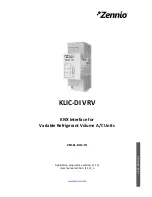
23
The Pressure Reducing Pilot [1] senses downstream pressure [2] and in real time
modulates the top chamber of main valve [3] to maintain a constant downstream
pressure.
In no-flow static conditions, should the downstream pressure start rising above the pilot
setting, the pilot closes, shutting the main valve [4] to maintain the allowable
downstream pressure.
The upstream water is connected to the Pressure Reducing Pilot [1], which is
subsequently connected to the top chamber of the main valve [3]. If this pressure is
such that the Pilot remains closed, the upstream pressure is the same as the top
chamber of main valve pressure. The pressure is balanced, and the valve is closed by
the tension in the spring.
Note: The pilot set point is adjusted by turning the pilot adjustment bolt and is not
dependent on upstream pressure.
Increasing spring force sets a higher output pressure.
Reducing spring force sets a lower output pressure.
However, if the upstream water pressure in the Pressure Reducing Pilot [1], does allow
the Pilot to open, the water exits the valve and becomes downstream water, but more
importantly, the pressure in the top chamber of the main valve [3] is now less than the
upstream pressure. This pressure differential causes the valve to open.
2.9
PRV
F
UNCTION
(
UNDER
S
ENTINEL
2
CONTROL
)
2.9.1
Sentinel 2 Mechanical Actuator
The Sentinel 2 includes the HWM mechanical actuator, which
attaches to the top of the pilot valve, replacing the adjustment
bolt.
Sentinel 2 is able to control the spring force by adding or
removing water from the upper chamber of the actuator. This
operates a rod internal to the device (the stem of the plunger)
which connects to the seat of the spring.
For 2-point pressure control, Sentinel controls the actuator to
change the position of the upper end of the spring. It switches
between set limits
for either a “High” or a “Low” pressure
; the
limits are adjustable. The procedure for installing the actuator
and setting its limits is covered in sections 4.11 and 4.12.
















































